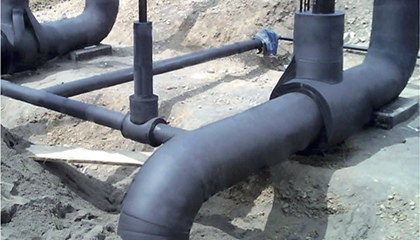Armaflex thermal insulation materials are quite convenient for insulation of pipelines laid underground, so they are often used for these purposes.
In order to achieve optimal results and performance characteristics of Armaflex thermal insulation, the company "Sunprace" recommends following the following rules:
In order to avoid mechanical damage to the materials of the Armaflex series, it is not allowed to lay insulated pipes directly on the ground: the pressure of pipes (especially large diameters) can lead to the destruction of the insulation, flattening it. To prevent this, it is recommended to use special supporting devices, for example, Armafix suspensions

To protect the insulation from the pressure of the earth from above, Armacell recommends laying the pipe in special channels, boxes or, for example, in sewer pipes intended for use underground or using a specially developed material of the Armaflex HDI brand with a protective coating Arma-Chek R
In an unprotected form, the Armaflex can only be mounted above the ground water level, since over time the water pressure can also lead to damage to the insulation and water penetration into the thermal insulation layer (in this case, thermal insulation will lose its meaning altogether).
The relatively high humidity of the soil surrounding the Armaflex materialis not a problem if the insulation is properly installed (for example, using a special glue), since this material has a high degree of resistance to moisture penetration.
We do not recommend using materials with low resistance to moisture penetration underground: such as mineral and fiberglass or polyurethane foam. These materials easily get wet, since it is almost very difficult to achieve absolute tightness of their surface.
Thermal insulation materials made of foamed polyethylene can also not be recommended for the insulation of pipelines laid underground. This is due to the unreliability of the adhesive joints of polyethylene thermal insulation, as well as with a significant shrinkage of the material after some time, which contributes to the bonding of longitudinal and transverse seams.
